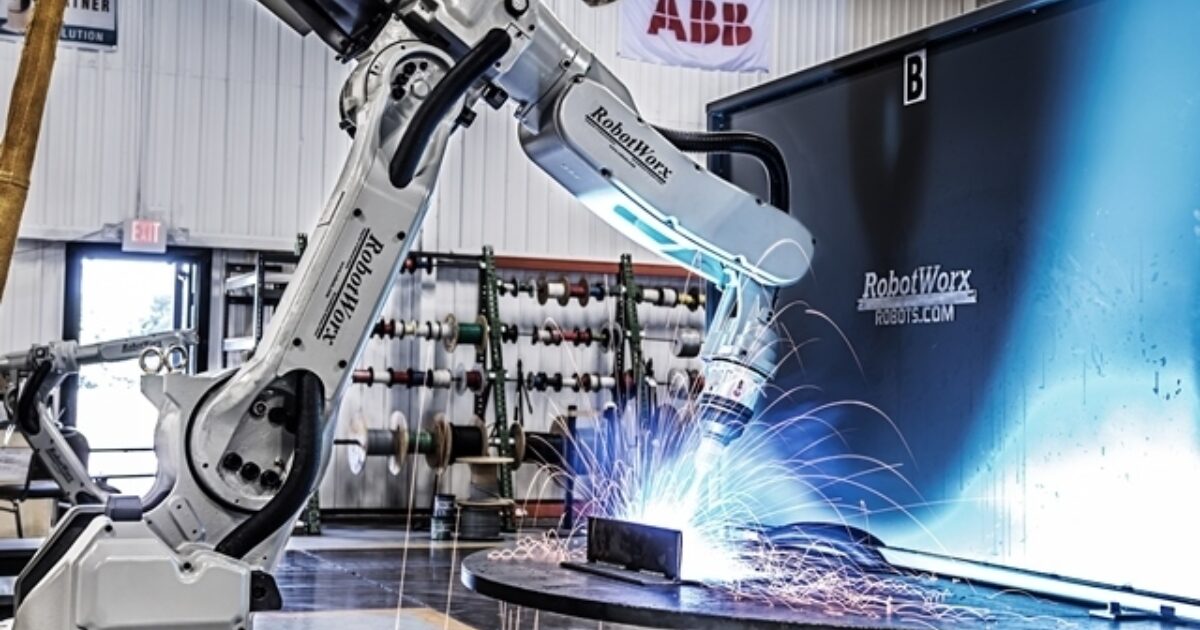Tech
Complete Guide to Understanding What are Heat Pipes

Wondering what are heat pipes? They are devices designed to move heat efficiently and reliably. Using phase-change technology, heat pipes transfer heat away from important components to prevent overheating and keep devices running smoothly. They are used in everything from laptops, smartphones, industrial machinery, and aerospace systems. This guide will explain how heat pipes work, the different types available, and why they are essential in modern technology.
What Is a Heat Pipe?
A heat pipe is a highly efficient, passive device that moves heat from hot areas to cooler areas using the principle of phase change. It’s widely used in electronics, aerospace, and other high-performance systems to keep components cool and reliable.
Components of a Heat Pipe
- Envelope (Outer Shell)
The envelope is the outer shell of a heat pipe, typically made from thermally conductive metals such as copper or aluminum. It is a sealed, hollow tube that contains the working fluid and internal components, providing structural integrity and enabling efficient heat transfer.
- Working Fluid
Partially fills the heat pipe and evaporates/condenses to transfer heat.
Common fluids:
- Water: up to ~100°C.
- Ammonia: low-temperature applications.
- Methanol/Ethanol: below freezing.
- Mercury/Sodium: high-temperature uses.
- Wick Structure
The wick structure returns condensed liquid from the cooler end to the hot end of the heat pipe using capillary action.
Common Types:
- Sintered metal powder.
- Screen mesh.
- Grooved channels.
- Evaporator Section
Absorbs heat from the source, turning the fluid into vapor.
- Adiabatic (Transport) Section
Vapor moves through this section with minimal heat loss toward the condenser.
- Condenser Section
Vapor releases heat, condenses back into liquid, and transfers heat to the surroundings.
Heat pipes are essentially thermal superhighways, efficiently moving heat while keeping devices cool, quiet, and reliable.
How Do Heat Pipes Work?
Heat pipes transfer heat efficiently using phase change and capillary action.
- Evaporation (Heat Absorption): When one end of the heat pipe is heated, the working fluid inside turns from liquid to vapor. This phase change allows it to absorb a large amount of heat quickly.
- Vapor Transport: The vapor travels through the heat pipe toward the cooler end, carrying the absorbed heat from the hot region to be released at the condenser.
- Condensation (Heat Release): This is the stage in a heat pipe where the vapor releases the absorbed heat at the cooler end and condenses back into liquid, allowing the heat to be transferred out of the system.
- Return of the Liquid: The condensed liquid is drawn back to the hot end by capillary action through the wick structure, ready to repeat the cycle.
The heat pipe works through a continuous cycle of evaporation, vapor transport, condensation, and liquid return. This process allows heat to move rapidly and evenly from hot to cooler areas, making heat pipes highly effective for cooling electronics, aerospace systems, and other high-performance applications.
Types of Heat Pipes
Heat pipes are designed in different ways to handle specific cooling needs in electronics, aerospace, and other high-performance systems. The main types are Standard Heat Pipes, Vapor Chamber Heat Pipes, and Loop Heat Pipes.
-
Standard Heat Pipes
The most common type, known for versatility and reliable performance.
- Applications: Widely used in laptops, gaming PCs, servers, and general electronics.
- Advantages: Simple design, effective heat transfer, and suitable for general-purpose cooling.
-
Vapor Chamber Heat Pipes
Flat, wide heat pipes are designed to spread heat evenly across large surfaces.
- Applications: High-performance computing, LED systems, and other devices where preventing hotspots is essential.
- Advantages: Handles high heat flux, provides uniform temperature distribution, and prevents localized overheating.
-
Loop Heat Pipes
Compact, flexible heat pipes are ideal for space-constrained environments.
- Applications: Aerospace systems, satellites, and advanced electronics where size and weight are essential.
- Advantages: Efficient heat transfer in tight spaces, lightweight, and suitable for high-performance systems in confined areas.
Choosing the right type depends on the application, space constraints, and heat transfer requirements.
Advantages of Heat Pipes
Heat pipes offer several benefits that make them essential for efficient thermal management in modern technology:
- High Thermal Conductivity: Transfers heat much faster than solid metals, ensuring efficient cooling.
- Compact and Lightweight Design: Ideal for space-constrained and portable devices.
- Silent Operation: Function without moving parts, providing noiseless cooling.
- Reliable and Low Maintenance: Sealed construction and passive operation result in long-lasting, trouble-free performance.
- Effective Heat Spreading: Distribute heat evenly and prevent hotspots, protecting sensitive components and improving overall system stability.
Heat pipes combine efficiency, reliability, and compactness, making them a cornerstone of modern cooling solutions.
Heat Pipe Cooling Applications
Heat pipes are flexible and efficient cooling components used across many industries to manage heat and maintain optimal operating temperatures. Their ability to transfer heat quickly makes them essential in systems where overheating could affect performance or safety.
- Electronics Cooling: Heat pipes transfer heat away from CPUs, GPUs, and other high-performance components, keeping devices within safe temperature limits. This enhances performance and extends the lifespan of electronic devices.
- Aerospace and Avionics: Heat pipes regulate temperatures in spacecraft, satellites, and avionics systems, ensuring reliable operation even in extreme space conditions.
- Telecommunications: Heat pipes are used in telecommunications to cool equipment where fans or active cooling aren’t practical. They efficiently manage heat from electronic components, making them ideal for compact or remote installations.
- Automotive Industry: In electric and hybrid vehicles, heat pipes manage battery temperatures, keeping them at optimal levels to ensure consistent performance and extend battery life.
- Renewable Energy Systems: Heat pipes enhance heat transfer in solar panels and other renewable energy devices, helping them maintain steady electricity generation and efficient heating, which improves overall system reliability.
- Medical Equipment: Heat pipes provide precise cooling for devices such as MRI machines and diagnostic tools, ensuring accurate results, safe operation, and reliable performance.
- HVAC Systems: Heat pipes improve energy recovery and temperature control in heating, ventilation, and air conditioning systems, making them more efficient and effective.
- Industrial Cooling: Heat pipes help prevent overheating of machinery and equipment, ensuring they operate smoothly and continuously without interruptions.
- Consumer Appliances: Heat pipes enhance cooling in household devices such as refrigerators and air conditioners, improving their efficiency and performance.
- Computer Servers and Data Centers: Heat pipes help maintain optimal temperatures in server farms and data centers, ensuring reliable operation and high performance even under heavy workloads.
Heat pipes are chosen by type, size, and working fluid to meet specific cooling needs. Their efficiency and reliability make them essential for modern electronics, aerospace, automotive, energy, industrial, and consumer applications.
Conclusion: Understanding Heat Pipes and Their Importance
Heat pipes are efficient cooling devices that use phase-change technology to move heat from hot areas to cooler ones. This prevents overheating and helps devices operate smoothly. They are commonly used in electronics, aerospace, industrial machinery, and renewable energy systems.
By efficiently keeping components cool, heat pipes enhance the reliability, compactness, energy efficiency, and lifespan of modern technology, enabling high-performance operation across many industries.
Tech
Top Benefits of Investing in a Robotic Welding Machine

In today’s competitive manufacturing world, automation is essential, not optional. One of the most significant advancements is the use of robotic welding machines on production lines. These systems are transforming industries by improving efficiency, consistency, and safety in welding operations.
Welding is critical for creating strong, reliable products, but it has traditionally been labor-intensive and hazardous. Robotic welding machines automate the process, providing precise, consistent welds, increasing production speed, reducing errors, enhancing safety, and minimizing material waste.
This guide explores how robotic welding machines are revolutionizing production, highlighting their benefits, applications, and key considerations for implementation. Whether upgrading existing operations or introducing automation, understanding robotic welding is essential to stay competitive in modern manufacturing.
What is a Robotic Welding Machine?
A robotic welding machine is an automated system that uses programmable robotic arms to perform welding with high precision and efficiency. Unlike human welders, robots can work longer hours, deliver consistent welds, and reduce material waste.
These systems often use robotic arms like PUMA-type or UR-type, designed to maximize performance while making the most of available space and avoiding collisions.
Some advanced robots can even mimic the techniques of skilled welders through operator skill modeling, allowing them to handle complex welds that once required expert human hands. In short, robotic welding blends human expertise with robotic precision, improving productivity, weld quality, and overall manufacturing performance.
How Does Robotic Welding Work?
Robotic welding works by using automated systems to perform welding tasks with high precision and efficiency. These systems rely on several key components that work together to ensure consistent, high-quality welds:
Components and Functionality
- Robotic Manipulator: A six-axis articulated arm that moves the welding torch along precise paths.
- Welding Torch: Mounted on the arm, it delivers the welding arc and filler material.
- Power Supply: Controls electrical parameters to maintain a stable arc and high-quality weld.
- Wire Feeder: Regulates the flow of filler material for uniform welds.
- Sensors and Cameras: Monitor the weld in real time, allowing automatic adjustments to maintain quality.
- Central Controller: Coordinates all components and executes programmed commands for seamless operation.
Achieving Efficiency and Precision
Robotic welders can operate continuously without fatigue, increasing productivity compared to human welders. They use programmed control of travel speed, arc length, and heat input to create welds with precise tolerances. Real-time sensors enable seam tracking and dynamic adjustments for consistent weld quality. Robots can reach challenging positions and maintain optimal torch angles, preventing defects like porosity or incomplete fusion.
Robotic welding combines automated control, advanced sensors, and precise mechanical movement to deliver efficient, accurate, and reliable welding results.
Top Benefits of Investing in a Robotic Welding Machine
Investing in a robotic welding machine can greatly improve manufacturing processes. Here’s what you need to know:
1. Enhanced Productivity
Robotic welders can work continuously without breaks, completing tasks faster than human welders and increasing overall production speed.
2. Consistent and High-Quality Welds
Robots produce uniform welds, reducing defects, errors, and material waste, which ensures a higher-quality end product.
3. Reduced Labor Costs
Automation reduces the need for skilled welders, allowing companies to use their staff for other important tasks and improve overall efficiency.
4. Improved Safety
Robots handle hazardous tasks, such as exposure to intense heat and fumes, reducing the risk of workplace injuries.
5. Lower Material Waste
Robotic systems can be programmed for precise material usage, saving resources, cutting costs, and supporting sustainability.
6. Scalability and Flexibility
Robotic welders are flexible and adaptable, letting manufacturers handle various welding tasks and adjust production quickly to meet changing demands.
Considerations Before Investing
- High Initial Investment: Robotic welding systems can be expensive upfront, but long-term savings and efficiency gains often make the investment worthwhile.
- Technical Expertise Required: Operating and maintaining robotic systems requires training and specialized knowledge, so investing in staff education is crucial.
Robotic welding machines offer increased productivity, consistent quality, lower labor costs, improved safety, and reduced material waste. While they require an initial investment and technical expertise, their long-term benefits make them a smart choice for modern manufacturing operations.
Applications Across Industries
Robotic welding machines are transforming manufacturing by automating complex and repetitive tasks with precision and efficiency. Here’s how they are used in key sectors:
- Automotive Manufacturing
Robotic welding is essential in car production, automating the assembly of car bodies, frames, and components. Robots perform spot welding, seam welding, and other processes quickly and accurately, ensuring consistent quality while reducing labor costs. This helps produce lightweight, high-strength vehicles.
- Aerospace and Heavy Machinery
In aerospace, robotic welding provides the precision needed for manufacturing aircraft components like wings, fuselages, and landing gear. It is also used in heavy machinery production, including construction equipment, where strong and durable welds are critical.
- Electronics, Construction, and Other Industries
Robotic welding is applied in electronics for assembling metal parts such as computer chassis and smartphone frames. In construction, robots fabricate steel structures, bridges, and buildings, ensuring structural integrity. The technology is also used in shipbuilding, energy infrastructure, and consumer goods manufacturing, showing its versatility.
Robotic welding machines boost productivity, maintain high-quality welds, and improve safety across a wide range of industries, making them a valuable investment for modern manufacturing.
Future Outlook of Robotic Welding Machines
The future of robotic welding is being shaped by advanced technologies, making it more adaptable, accessible, and useful across industries.
- AI and Machine Learning
AI and machine learning allow robotic welding systems to learn from real-time data, optimize welding settings, and detect defects during operations. This makes robots more adaptable, enabling them to handle different materials and conditions with improved precision and efficiency.
- Collaborative Robots (Cobots) for SMEs
Cobots are designed to work safely alongside humans without safety cages. They are affordable, easy to program, and flexible, making them ideal for small and medium-sized businesses. Cobots handle repetitive or precision welding tasks, freeing skilled welders to focus on more complex work.
- Expanding Applications Across Industries
Robotic welding is no longer limited to automotive or aerospace. Its use is growing in electronics, construction, renewable energy, and more. For example, in the automotive sector, robots perform spot and seam welding on car panels, frames, and exhaust systems, ensuring fast, precise, and consistent welds.
AI and machine learning are making robotic welding systems smarter and more adaptable, while collaborative robots are making automation accessible to smaller companies. With applications spreading across diverse industries, robotic welding is becoming a versatile and essential tool in modern manufacturing.
Tech
What Do Formats, Skills, and Fuzzy Matching Mean in Resume Parsing

The modern hiring landscape generates an overwhelming volume of resume documents that human reviewers simply cannot process efficiently. Companies receive applications in every conceivable format, from sleek designer PDFs to plain text emails, each requiring hours of manual review to extract relevant qualifications.
Automated resume parsing has evolved from a nice-to-have feature into an essential infrastructure component for organizations competing for talent. This article explores the technical realities, common challenges, and available solutions for organizations building or implementing resume parsing systems at scale.
Named Entity Recognition for Personal Information
Extracting contact details seems straightforward until you encounter the countless ways people present their information. Phone numbers appear with different country codes, spacing conventions, and formatting styles across international applicants.
Email addresses are usually reliable markers, but names can span multiple lines or include credentials and titles that need separation. The parser must distinguish between the candidate’s name and company names mentioned in their work history without creating confusion.
Work Experience Extraction Patterns
Employment history represents the most critical section for most recruiting decisions, yet it varies dramatically in structure. Some candidates list employers first, others lead with job titles, and many include overlapping date ranges for concurrent positions.
Bullets describing responsibilities might be detailed paragraphs or terse fragments depending on the candidate’s writing style. Accurately associating each responsibility with the correct role and employer requires understanding temporal relationships and hierarchical document structure.
Education Section Variability
Academic credentials appear in countless configurations that confuse simple pattern matching approaches. Degree abbreviations differ by country and institution, with some candidates spelling out full degree names while others use acronyms.
Graduation dates might be listed as years only, specific months, or expected completion dates for current students. International degrees require mapping to equivalent local qualifications, and the parser must recognize whether a certification or credential represents formal education or professional training.
Fuzzy Matching Services for Skills Extraction
Skills extraction becomes exponentially more complex when you consider that candidates describe the same competency in different ways. A data scientist might mention machine learning, ML, statistical modeling, or predictive analytics while referring to similar capabilities. Service providers offer APIs specifically designed to normalize these variations by maintaining comprehensive skills taxonomies.
Some software, like that offered by NetOwl, provides specialized matching that understands relationships between related technologies, such as recognizing that React experience implies JavaScript knowledge. These platforms continuously update their databases to recognize emerging technologies and industry-specific terminology that wouldn’t exist in generic natural language processing tools.
Job Title Normalization Challenges
Job titles have become increasingly creative and non-standardized across different companies and industries. A software engineer at one company might be called a developer, programmer, or code ninja at another organization.
Seniority indicators like junior, mid-level, and senior don’t follow consistent industry definitions and vary by company size. Normalizing these titles into searchable categories allows recruiters to find relevant candidates regardless of how their previous employers labeled their roles.
Skills Taxonomy Maintenance
Maintaining accurate skills databases requires constant attention because technology and business practices evolve rapidly. New programming languages, frameworks, and methodologies emerge while older skills become obsolete or transform into something different.
A comprehensive skills taxonomy needs to capture not just the skills themselves but also their relationships, such as which skills commonly appear together or which ones represent prerequisites for others. This relational understanding helps identify transferable skills when a candidate’s exact experience doesn’t perfectly match a job description.
Context-Aware Parsing
Understanding context dramatically improves parsing accuracy compared to simple keyword extraction approaches. A candidate mentioning Python in their skills section clearly refers to the programming language, while Python in a zoology research paper means something entirely different.
The same word can represent a tool, a company name, or a project name depending on where it appears in the document. Advanced parsers analyze surrounding text and document structure to disambiguate these meanings and avoid false matches.
Data Quality and Confidence Scoring
Parsed resume data always contains some level of uncertainty that systems should communicate to human reviewers. Not every field can be extracted with the same confidence, particularly from poorly formatted or unconventional documents.
Providing confidence scores for each extracted field helps recruiters know which information needs manual verification versus what can be trusted automatically. These scores become especially important when building automated screening workflows that make decisions based on parsed data.
Multilingual Resume Processing
Global talent pools mean recruiters regularly encounter resumes written in multiple languages, sometimes within a single document. Candidates educated in one country but working in another often mix languages when describing their background, creating unique parsing challenges.
Character encoding issues can corrupt names and addresses when documents move between systems with different language settings. Effective parsing systems need language detection capabilities and either translation services or multilingual models to extract structured data regardless of the source language.
Career Gaps and Non-Linear Paths
Traditional parsing systems expect chronological work histories with clear start and end dates, but modern careers rarely follow such predictable patterns. Freelance work, contract positions, parental leave, and sabbaticals create gaps and overlaps that confuse timeline reconstruction.
Some candidates organize their experience functionally rather than chronologically, grouping similar roles together regardless of when they occurred. The parsing system must accommodate these alternative structures without forcing information into rigid templates that misrepresent the candidate’s actual career progression.
Privacy and Compliance Considerations
Resume data contains sensitive personal information that triggers various privacy regulations depending on jurisdiction. Names, addresses, dates of birth, and sometimes even photos or demographic information appear in resume documents that organizations must handle appropriately.
Parsed data often flows into multiple systems, including applicant tracking platforms, background check services, and analytics databases. Organizations need clear data retention policies and technical controls to anonymize or delete candidate information according to regulatory requirements and ethical hiring practices.
Integration with Existing Systems
Parsed resume data only becomes valuable when it flows seamlessly into the tools recruiters actually use daily. Most organizations already have applicant tracking systems, HRIS platforms, and assessment tools that need structured candidate information.
API compatibility, data format standards, and field mapping between systems determine whether parsing adds value or creates additional manual work. The technical architecture must handle both batch processing of historical resumes and real-time parsing of new applications as they arrive.
Building or implementing resume parsing at scale requires understanding far more than just text extraction algorithms. The technical challenges span document format handling, entity recognition, skills normalization, and system integration across diverse hiring workflows.
Specialized service providers offer pre-built solutions for many of these problems, particularly around fuzzy matching for skills and job titles, where maintaining current taxonomies requires dedicated resources. Organizations must balance build versus buy decisions based on their specific volumes, use cases, and technical capabilities while keeping candidate experience and data privacy at the forefront of their implementation strategy.
Tech
From Prompt Engineering to Agent Orchestration: What Companies Need in the Agentic AI Era

The Rise of Agentic AI
Not long ago, getting results from AI was about crafting clever prompts. Today, in the agentic AI era, the game has changed. Businesses are moving from interacting with single models to orchestrating networks of intelligent agents that specialize, collaborate, and execute multi-step workflows with minimal human oversight.
The Agentic AI Revolution
The shift is profound: from “telling AI what to do” to “working with AI teams that decide and act.” Unlike traditional AI tools that wait for instructions, agentic systems can:
Break down high-level goals into actionable steps
Adapt strategies based on feedback or changing conditions
Interact with other agents to divide and conquer tasks
Refine execution until the goal is achieved
Frameworks such as LangChain, AutoGen, and CrewAI have fueled this evolution, enabling orchestration of multiple specialized agents into cohesive, goal-oriented systems. Cloud providers like AWS (Bedrock Agents) and Google Cloud (Vertex AI Extensions) are embedding these capabilities into their platforms, signaling that multi-agent architecture is now enterprise-ready.
From Prompts to Orchestration
Prompt engineering still matters — it builds clarity in goals and constraints. But the new frontier is orchestration: designing, deploying, and managing agent networks that can share context, communicate, and integrate with external APIs, datasets, and enterprise systems.
Instead of chasing the “perfect prompt,” companies are learning to:
Assign specialized roles to different agents
Enable shared memory so agents build on each other’s work
Establish collaboration protocols to coordinate execution
Embed compliance and guardrails directly into workflows
This is not hype. The autonomous AI agent market is forecast to grow from $4.8 billion in 2023 to $28.5 billion by 2028.
The New Agentic AI Skill Stack
To compete in the agentic AI era, teams must master new capabilities.
Key components include:
Advanced prompt engineering – Crafting goal-oriented prompts for multi-agent systems
Multi-agent orchestration – Using frameworks like LangChain, AutoGen, and CrewAI to manage complex workflows
Secure and compliant deployment – Sandboxed environments, data governance, and compliance-first design
Observability and monitoring – Building reliability by tracking outputs, accuracy, and anomalies
Adaptive system design – Creating modular systems that evolve with advancing AI capabilities
The most successful companies will combine human oversight with autonomous execution, building clear workflows for escalation, exception handling, and governance.
The Road Ahead
The next wave of AI will be defined by domain-specific agent ecosystems in high-value industries such as finance, healthcare, manufacturing, and logistics. Analysts expect steep adoption curves. Gartner predicts that by the end of the decade, autonomous agents will manage a significant share of business interactions and process automation.
This will normalize the presence of AI colleagues:
Project manager agents that track deliverables and flag risks
Research agents that surface insights and prepare reports
Strategic agents that propose solutions or negotiate priorities
AI is moving from assistant to embedded team member — one that may soon initiate collaborations and shape decisions. The question for leaders is no longer if this shift will affect them, but how quickly they will adapt.
Final Word
If your AI strategy is still focused only on prompt crafting, you are already behind. The future is orchestration, governance, and integration. The leap from prompt engineering to agent orchestration mirrors every major tech shift: as tools evolve, so must people and processes.
Teams that embrace observability, security, and adaptive design now will unlock AI’s potential at scale. Those who delay risk spending the next decade playing catch-up.
-

 Health1 week ago
Health1 week agoThe Role Of General Veterinarians In Supporting Rehabilitation
-

 Health1 week ago
Health1 week agoWhy Choosing A Family Dentist With Cosmetic Expertise Matters
-

 Health1 week ago
Health1 week agoHow Accountants And Consultants Work Together To Support Growth
-

 Health1 week ago
Health1 week agoHow General Dentistry Bridges Preventive And Cosmetic Dentistry Together
-

 Health1 week ago
Health1 week agoHow Animal Hospitals Handle Reproductive And Breeding Care
-

 All1 week ago
All1 week agoRXZ Member 2025: Phenomenon, Culture and Latest Developments
-

 Home5 days ago
Home5 days agoRoof Repair & Replacement: Leading Roofing Companies Canton Ohio Revealed
-

 Health1 week ago
Health1 week ago4 Steps In The Dental Implant Process Explained Simply




